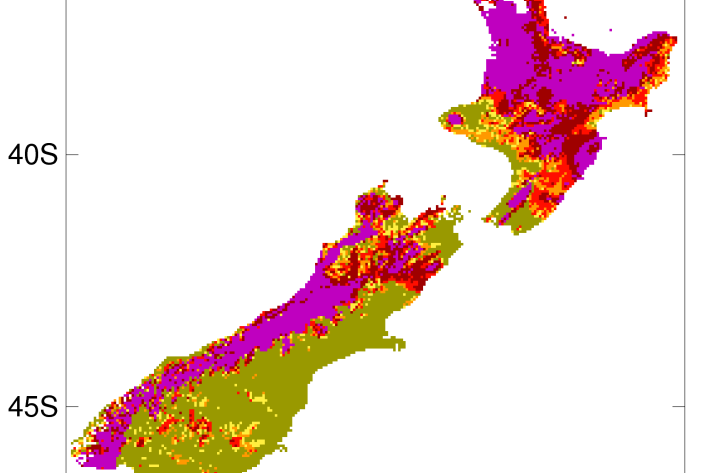-

Common hydrological terms
Education ResourceDescriptions of the common terms that explain the processes that occur in hydrology. -

2012-2013 Drought
The 2012-2013 drought affected the entire North Island plus the west coast of the South Island. -

Riparian management classification
Management of stream riparian areas - including vegetation and stock access - influences the health of streams and downstream water bodies. -
NZ temperature record
Research ProjectThere are many lines of evidence showing that NZ has warmed during the past century. -

Dry stock
Dry stock farming consists predominantly of pasture grazing beef cattle, sheep, and deer for meat, wool, and velvet production. -

Applying for vessel time
Find out how you can have access to NIWA's research vessels to carry out marine research voyages. -

Southwest Pacific Tropical Cyclone Outlook
Publication seriesA summary of up-coming tropical cyclone seasons, issued 6-monthly. -

Stormwater - an introduction
Stormwater is a major concern for New Zealand because of its potential effects on the ecological health of our urban streams and coastal waters, as well as on the economic, social and cultural value of these environments. -

RV Kaharoa
FacilityKaharoa is capable of working throughout New Zealand's EEZ and further afield. -

Seafood sector
NIWA's seafood sector work comprises our fish, fisheries and aquaculture research and consultancy. -

How do we determine past climate?
Information about past climate is obtained from piecing evidence together from various sources.

